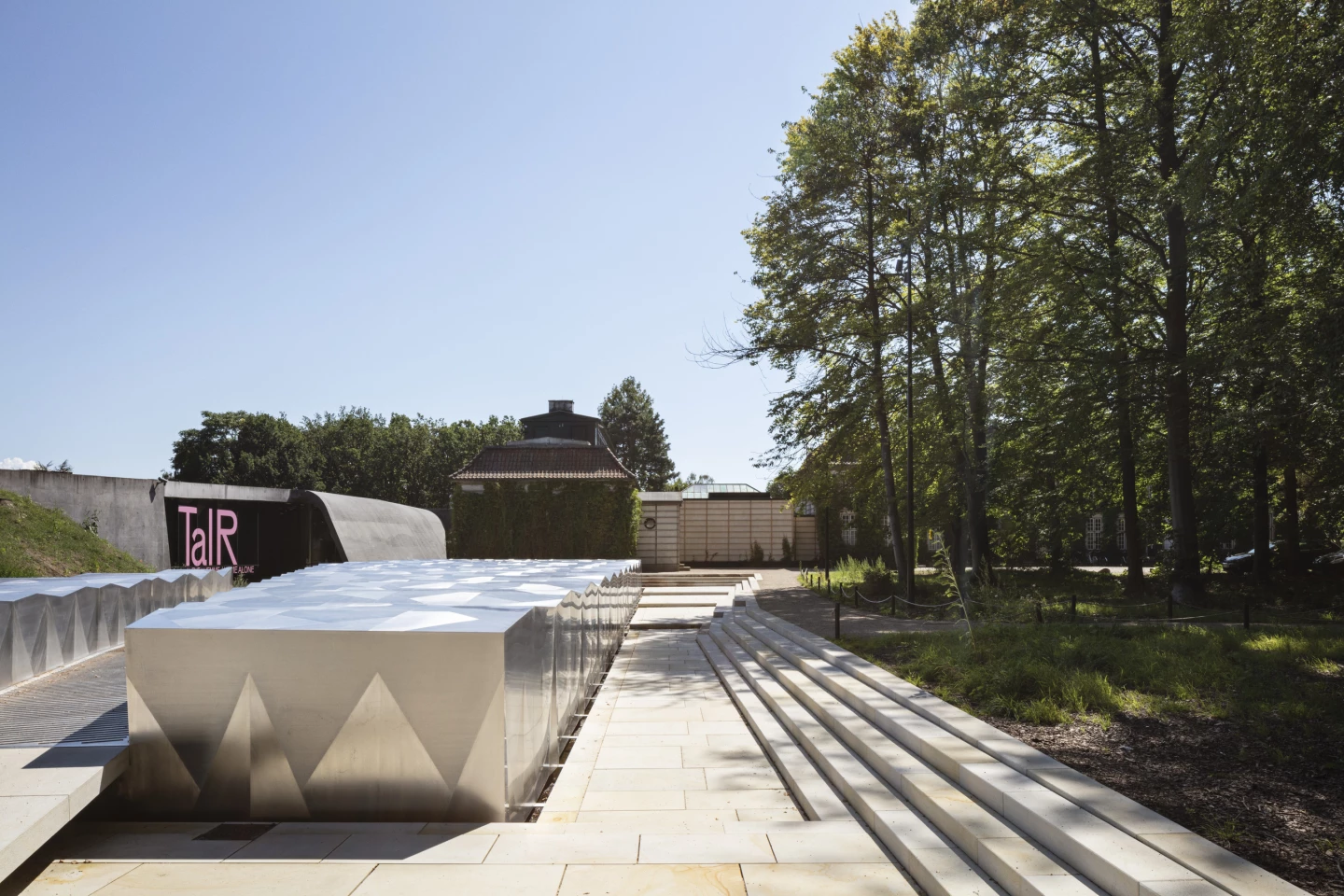Denmark's Ordrupgaard Museum hosts northern Europe's most comprehensive collection of French and Danish art from the 19th and early 20th centuries. So much art in fact, that despite a prior extension by Zaha Hadid, it required more exhibition space on what was becoming an awkward and relatively cramped site. Snøhetta rose to this challenge by creating an underground gallery with minimal disturbance to the museum's landscaped grounds.
The Ordrupgaard Museum was originally conceived as an opulent country mansion during World War I. Hadid's 1,150-sq-m (roughly 12,380-sq-ft) extension was added in 2005 and that building's modern black concrete contrasts markedly with the older neo-classical styling of the mansion. Snøhetta's addition, meanwhile, measures 1,800 sq m (20,000 sq ft), most of which situated at a depth of 6 m (20 ft) underground.

Snøhetta made what it calls a surgical cut into the landscape between the mansion, Hadid's gallery and a protected forest, then poured in concrete to create the main structure of the gallery – at times coming as close as 1.5 m (4.9 ft) to the existing buildings. Cranes then carefully added the roofs and soil was put into place to recreate the landscape.
"During the construction phase, Snøhetta's landscape team worked meticulously to safeguard the protected park, ensuring a surgical-like cut between the surrounding park and new extension," explains the firm. "Snøhetta has also altered the landscape surrounding Hadid's extension with great care, planting the hillside with meadow flowers, and excavating the building somewhat, as well as integrating the building with the two Hadid-inspired subterranean exhibition spaces."
The areas of the new gallery that connect onto Hadid's building duplicate the late starchitect's dark concrete color palette, while the other exhibition spaces are much lighter and finished in oak floors, walls, and ceilings to create a warm and inviting atmosphere. The exhibition spaces are also designed to be flexible and enable the museum's curators to change the art and decor when required with relative ease. A lobby, staircases, and a museum store lie elsewhere in the underground gallery.

The largest of the exhibition spaces designed by Snøhetta is not actually fully underground, but partially protrudes into the garden area as a steel impressionist-inspired sculpture that's conceived as a half-excavated treasure. Welded on-site, the structure has been painstakingly carved into different angles to create pleasing light patterns. It's surrounded by a seating area that's half sunk into the ground, and offers views of the century-old park that surrounds the museum.
The new museum extension opened to the public August 14.
Source: Snøhetta








